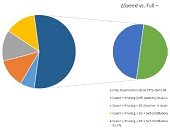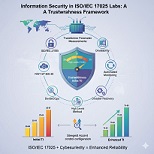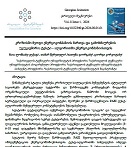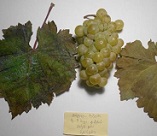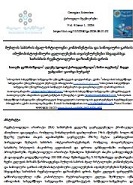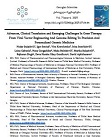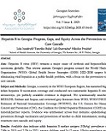Probiotic microorganisms – Propionibacterium ssp
Downloads
Propionic acid bacteria belong to probiotic microorganisms, probiotic properties of which have not yet been thoroughly investigated. The research describes the probiotic features of milk propionic acid bacteria, including growth at high acidity, tolerance to bile acid, ability to suppress pathogenic microorganisms, and antibiotic susceptibility, as well as the ability to extend the shelf life of various fermented milk products due to the synthesis of propionic acid. Propionic acid bacteria have a robust nature, which makes it easy to overcome technological difficulties in the process of optimizing production. This enables them to be used in the future for the production of various fermented probiotic foods.
Downloads
Metrics
Reid, G., Gadir, A.A. and Dhir, R. (2019) Probiotics: Reiterating What They Are and What They Are Not. Frontiers in Microbiology, 10, 424.
Chuayana, E.L.J., et al. (2003) Antimicrobial Activity of Probiotics from Milk Products. 32.
FAO/WHO (2006) Probiotics in Food: Health and Nutritional Properties and Guidelines for Evaluation. Report of a Joint FAO/WHO Expert Consultation on Evaluation of Health and Nutritional Properties of Probiotics in Food Including Powder Milk with Live Lactic Acid Bacteria, Cordoba, Argentina, 1-4 October 2001 [and] Report of a Joint FAO/WHO Working Group on Drafting Guidelines for the Evaluation of Probiotics in Food, London, Ontario, Canada, 30 April-1 May 2002. FAO Food and Nutrition Paper 85, Food and Agriculture Organization of the United Nations, World Health Organization, Rome.
Adams, M. C., and Huang, Y. (2005). Probiotic Propionibacterium. 11/018,911
M.T.Fröhlich Wyder H.P.Bachmann. Cheeses With Propionic Acid Fermentation. J. Cheese:. Chemistry, Physics and Microbiology. 2004, 2, 141-156.
Gardiner, G. E., Bouchier, P., O’sullivan, E., Kelly, J., Collins, K., Fitzgerald, G., Ross, R.P., Stanton, C. (2002). A spray-dried culture for porbiotic Cheddar chesse manufacture. International Dairy Journal, 12, 749-756.
საჩანელი თ., ამირანაშვილი ლ., გაგელიძე ნ. თუშური გუდის ყველის მიკრობიოტას დომინანტი კომპონენტები. (2019) საქართველოს სოფლის მეურნეობის აკადემიის მოამბე. 1(41)88-92
Foligné, B., Deutsch, S. M., Breton, J., Cousin, F. J., Dewulf, J., Samson, M., Pot, B., Jan, G. (2010). Promising immunomodulatory effects of selected strains of dairy propionibacteria as evidenced in vitro and in vivo. Appl. Environ. Microbiol., 76:8259-8264.
Amiranashvili L.L., Gagelidze N.A., Makaradze L.A., Varsimashvili Kh.I., Tolordava L.L., TinikashviliL.M., Amashukeli N.V., Sachaneli-Qadagishvili T.Z. (2017). The effectof homoprobiotic preparation “Probiogeo” supplemented with drinking water andfeedon survivability and growth performance of broiler-chickens. Annals of Agrarian Science 15,4,476-479
Ali MN, Mohd MK (2011) Enhancement in vitamin B12production by mutant strains of Propionibacterium freudenreichii. Int J Eng Sci 3:4921–4925
L. Meile etal. (2008) Safety assessment of dairy microorganisms: Propionibacterium and Bifidobacterium . Int. J. Food Microbiol.

This work is licensed under a Creative Commons Attribution-NonCommercial-NoDerivatives 4.0 International License.














